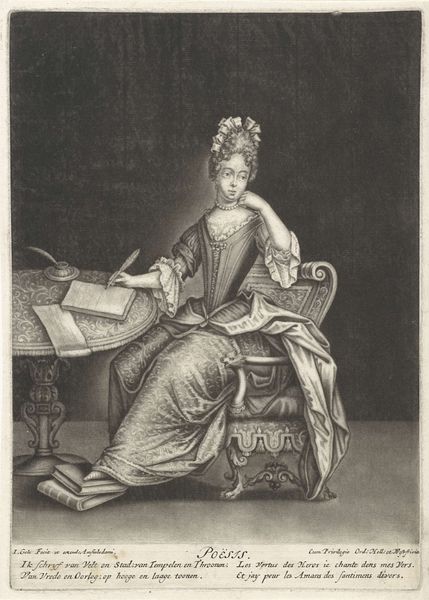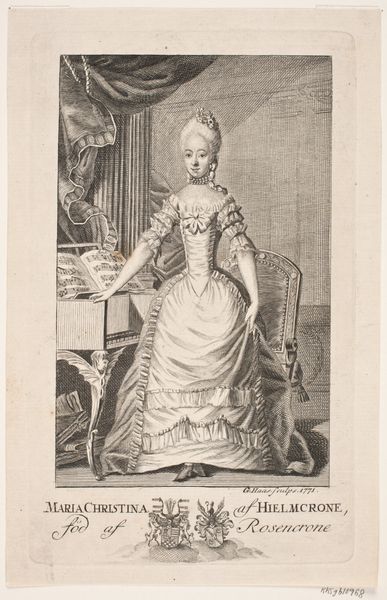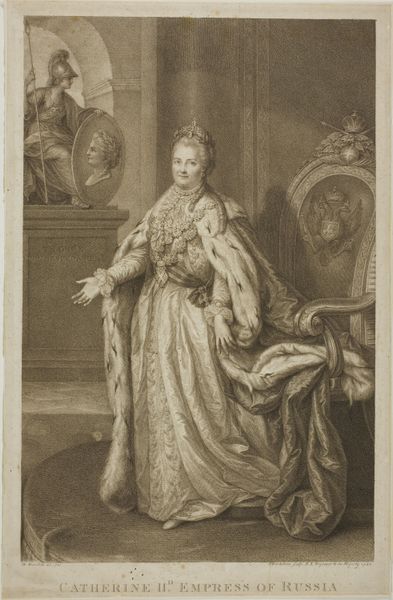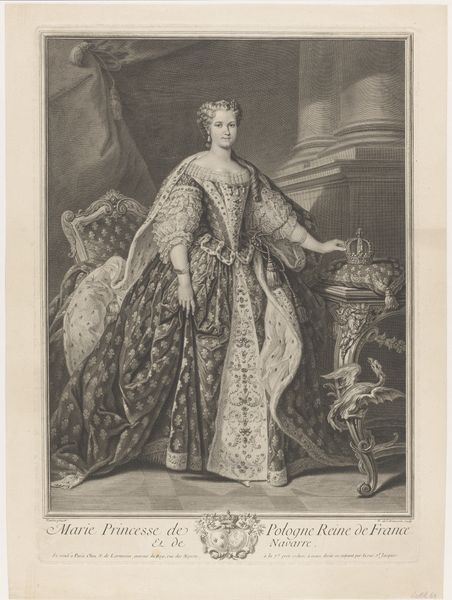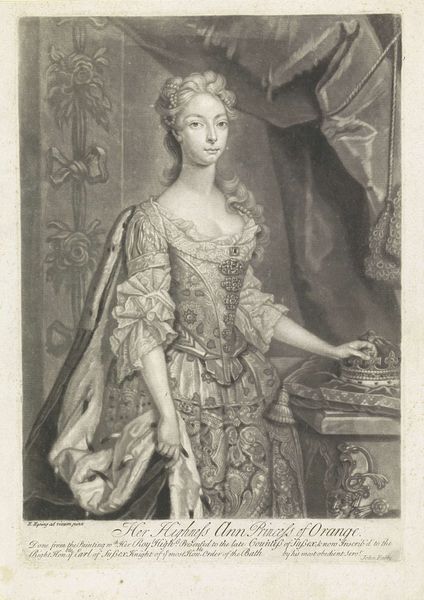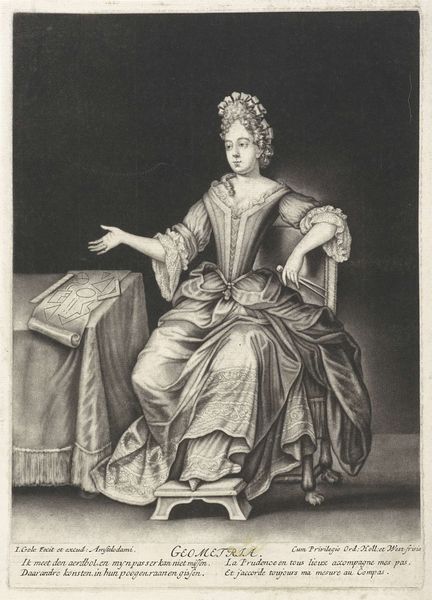
Dimensions: height 331 mm, width 224 mm
Copyright: Rijks Museum: Open Domain
Curator: So, here we have Carlo Faucci's 1775 engraving, "Portret van Marie Louise, prinses van Spanje". It's quite the regal presentation. What strikes you first? Editor: It's the dress, isn't it? All those yards of fabric transformed into status. I'm fascinated by the labour that goes into these aristocratic displays—the weavers, the seamstresses… they're mostly invisible, yet completely essential. It's such a baroque statement. Curator: You're right; the dress speaks volumes! I'm caught by the cool, almost detached gaze of Marie Louise. There's a story there, perhaps a touch of melancholy? The engraving technique really captures the intricate details of the dress, those layers of lace... it gives it all such depth and texture despite being on paper. Editor: It's fascinating to consider the economics of engraving back then. How widely could these images circulate? Who owned them? They served as potent forms of propaganda. Not merely aesthetic objects. I mean, even the tiny dog in the corner is there to make a statement about the subject's lifestyle and consumption habits. Curator: Good point. And you know, engravings always feel a bit ghostly, don't they? As if the sitter is both present and absent at the same time. It almost captures something essential, a whisper of her inner self—do you feel it? Editor: I'm not sure about the ghostly presence, but I see the meticulous process by which it came into being: the painstaking detail, the tools required, and all the production steps from start to finish! Curator: Well, regardless of ghosts, it's certainly got a presence! Thanks for drawing our attention to these things. I think our listeners will look at it differently now. Editor: I hope so! Let's not forget the physical reality embedded in every image. It is the tangible evidence of all this labour that speaks to me.
Comments
No comments
Be the first to comment and join the conversation on the ultimate creative platform.



